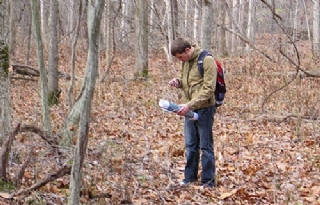 With the success of the show American Pickers
With the success of the show American PickersIt usually starts with frequenting antique stores where the prices are too high, but you can still find hidden gems which will still make you a few dollars. You do have to start somewhere and antique stores open you up to items you may know nothing about, but at least you'll start picking up some knowledge.
Once you start gaining a bit more know how on different items, their manufacturing dates and who made them, it's easier to become a better picker.
If you've never even begun to think about where to start, here are some ideas that helped me start collecting.
How To Start Collecting
- Every weekend I would get up super early and drive around my neighborhood looking for garage sales. I never really wasted time looking online for scheduled garage sales because so few people actually take the time to do that. Furthermore, for many people it's a last minute decision.
- Does your town have a fairgrounds? Typically, a larger fairground is used for a one day flea market during the week. This is by far so much better than flea markets. Antiques can be found in large numbers if this venue is actually available in a town near you.
- I don't know about you, but flea markets have really become wholesale clubs full of mass produced garbage. I don't waste my time anymore. There are exceptions, however. Flea markets up north tend to still cater to the antique picker.
- Where's that strip of antique stores in your state or town? There's has to be at least one. I use to frequent junk stores in the antique districts along with the larger venues. Larger meaning about three stories high where vendors rent out booths. My biggest finds were porcelain, sold in sets, but worth so much more in individual pieces. Those pieces I sold on ebay made me close to a $1000.00 profit. Furthermore, booths rented on the top floor are a bit inaccessible for most people, so hidden treasures can always be found if you look hard enough.
- My biggest pick was at an estate sale. There were over a dozen sets of porcelain dinnerware and I happened to pick up 2 sets for only $100.00. You may be wondering why I bother with dinnerware, right? For me, it's one of the easiest picks to resell since people are always looking for a piece they may have broken or they may just want to add to the set.
- Go to the library and research. It sounds like going into the archives a hundred years ago since people rely so heavily on the internet now. Libraries are a treasure trove of antique archaeology knowledge. I have spent hours copying porcelain stamps and crests, writing price lists up, and so forth and so on.
- Visit Estatesales.net . This site has an up to date listing of sales in every state and every major city. I try to hit up an estate sale at least every other weekend. Deals can be found the last day of the sale in the morning. Remember to bring cash, and lots of it, and leave your purse or bags at home. Besides porcelain, there other items I always pick up are brass plates with Indian designs. At the last sale, I picked up two peacock brass plates for $.50 each and sold one for $100.00.
- Craigslist can also be a helpful tool if you're looking for larger items such as antique cars or furniture.
- Antique auctions, whether online or live, can be another source you can utilize for finding larger items. Just watch out for the taxes and fees they tack on after you commit to buy.
- I've never been able to find much at pawn shops, but I suppose it depends on the pawnshop you visit. If you're able to haggle on an item such as jewelry, you can turn around and double your money.
 Tips For Antique Archaeology Picking
Tips For Antique Archaeology Picking
- Look for items you'll enjoy as well. Why? You may be stuck with them if you can't sell them right away.
- Try to focus your attention and time on one type of antique in the beginning. Why? Picking can be overwhelming for the novice, as we saw with Danielle on her first big pick. You have to know what you're looking for.
- Be willing to negotiate with owners. Learn how to haggle, but also learn not to offend with a low offer that will turn the owner off.
I realize there are hundreds of ways to acquire archaeological antiques, some of which I have yet to try. On American Pickers, Danielle is always furnishing leads to Mike and Frank. How she actually finds these amazing sites is unknown to me, but with a bit of digging, I'm sure you can figure it out.











































